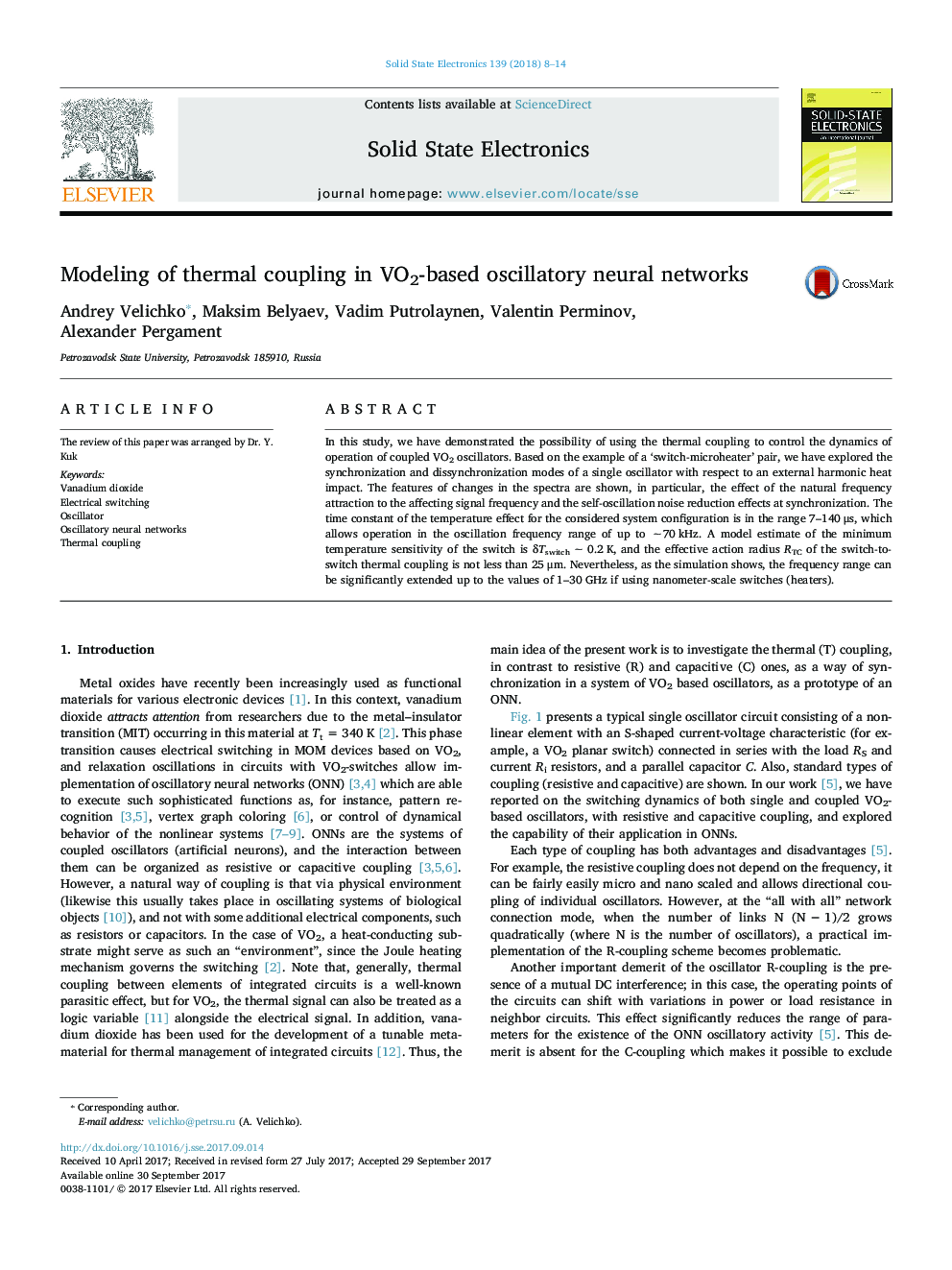| Article ID | Journal | Published Year | Pages | File Type |
|---|---|---|---|---|
| 5010162 | Solid-State Electronics | 2018 | 7 Pages |
â¢Thermal coupling is proposed to connect VO2 switches in oscillatory neural networks.â¢Synchronization and dissynchronization regimes are explored in the switch-microheater pair model.â¢The time constant of the temperature effect for the considered system configuration is in the range 7-140 μs.â¢A model estimate of the minimum temperature sensitivity of the switch is â¼0.2 K.â¢The effective action radius of the switch-to-switch thermal coupling is over 25 μm.
In this study, we have demonstrated the possibility of using the thermal coupling to control the dynamics of operation of coupled VO2 oscillators. Based on the example of a 'switch-microheater' pair, we have explored the synchronization and dissynchronization modes of a single oscillator with respect to an external harmonic heat impact. The features of changes in the spectra are shown, in particular, the effect of the natural frequency attraction to the affecting signal frequency and the self-oscillation noise reduction effects at synchronization. The time constant of the temperature effect for the considered system configuration is in the range 7-140 μs, which allows operation in the oscillation frequency range of up to â¼70 kHz. A model estimate of the minimum temperature sensitivity of the switch is δTswitch â¼Â 0.2 K, and the effective action radius RTC of the switch-to-switch thermal coupling is not less than 25 μm. Nevertheless, as the simulation shows, the frequency range can be significantly extended up to the values of 1-30 GHz if using nanometer-scale switches (heaters).
